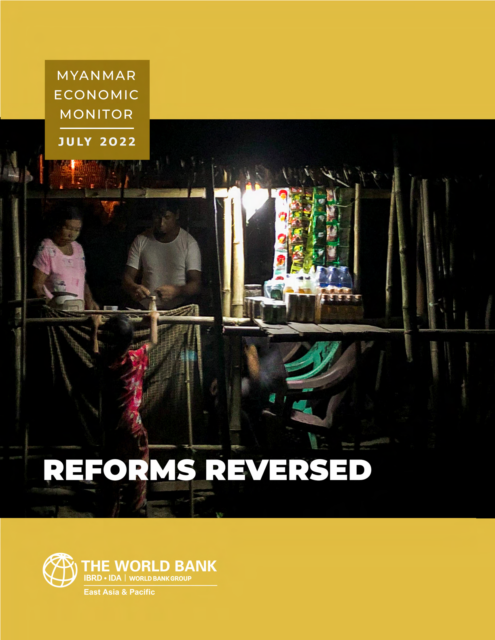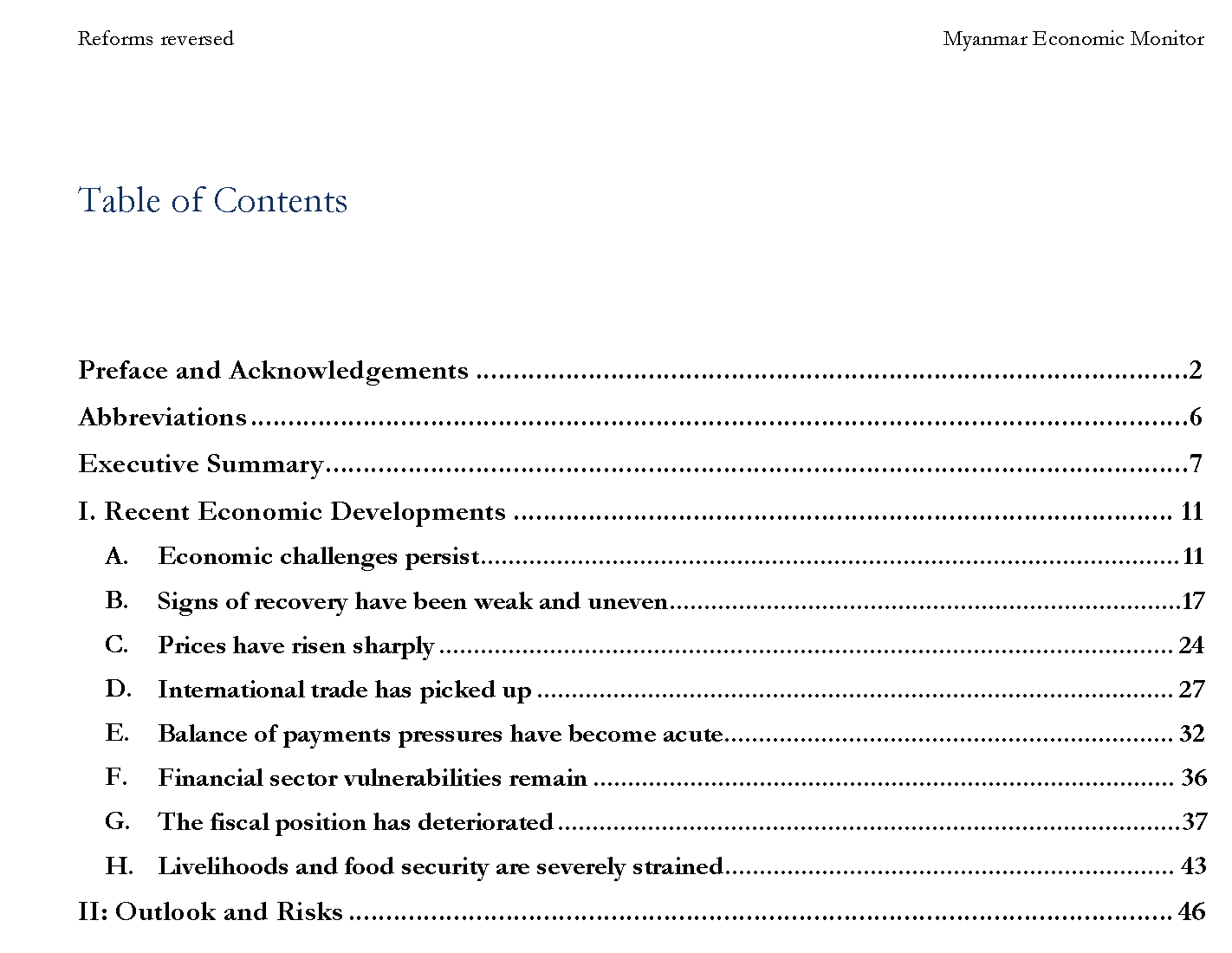Myanmar Economic Monitor, July 2022: Reforms Reversed [EN/MY]



Executive Summary
Since the beginning of 2022, Myanmar’s economy has faced a series of external and domestic shocks. The war in Ukraine has caused steep increases in global prices of fuel and fertilizer, which have passed through to a broader range of goods and services. This has led to a sharp rise in input costs across all industries, and fueled inflation which in turn further strained real household incomes. Domestic electricity shortages have also impacted households and businesses across the country. The security environment has deteriorated further in northern and southern regions, while Chin and the Dry Zone remain embroiled in severe conflict. This has disrupted economic activity, with one fifth of all firms (and two fifths of all agricultural firms) surveyed by the World Bank in May 2022 indicating that conflict was the most important challenge to their operations.
Notwithstanding these shocks, some parts of the economy have stabilized and even recovered somewhat since late 2021, demonstrating the resilience and adaptability of Myanmar’s businesses. Firms have reported operating at higher capacity in 2022 than in 2021, particularly in the manufacturing sector. The manufacturing Purchasing Managers’ Index reached neutral levels in the first half of 2022, after a long period of contraction. Garment manufacturers – mainly reliant on external demand –seem to have recovered relatively strongly, as demonstrated by the ongoing expansion in manufactured exports since mid-2021. Construction activity has also picked up as work on several projects has restarted after a long pause last year. This improvement in economic activity has been supported by a rise in mobility, with workplace mobility returning to pre-pandemic levels in June after substantial dips in 2021. The fourth wave of COVID-19 transmissions was much less severe than expected in January, with the number of recorded cases (and the severity of those cases) significantly lower than during the third wave in mid-2021.
But activity in other industries and services remains weak, as declining real household incomes have weighed on domestic demand. Despite the recovery in mobility at retail and transport venues, World Bank household survey results from April 2022 suggest that real consumption – particularly of discretionary nonfood items – had declined from a year earlier. Household survey results indicate that job losses, reduced work hours and lower wages and incomes from household farms and businesses have all contributed to a reduction in nominal household incomes. Real household incomes were further eroded by sharply rising inflation, with the latest available data indicating that CPI inflation accelerated to 17.3 percent (yoy) in March, driven by sharp increases in the prices of food and fuel. The weakness in private consumption was corroborated by the May 2022 firm survey results, which indicated that retail and wholesale firms’ sales had fallen by more than a quarter from a year earlier.
Rising costs have affected the operations of all businesses, squeezing profit margins. Increases in global oil prices – exacerbated by the Ukraine conflict – have driven pronounced increases in domestic fuel prices and transport costs, as well as in the cost of running diesel generators to compensate for recurring electricity outages. Over the first half of 2022, the local price of fuel rose by around 70 percent. Kyat depreciation, supply chain disruptions and the spillover effects of higher transport prices have resulted in price increases for a broader range of imported inputs, squeezing already thin profit margins. Increases in the price of fertilizer and other agricultural inputs have prompted a reduction in their use, with negative implications for future crop yields.
Despite a narrowed current account deficit, external balance of payment pressures have become acute. The current account deficit narrowed in the year ended September 2021, due to a narrower goods trade deficit (with imports contracting by more than exports in FY2021), sharply lower travel and other services receipts, and a 30 percent decline in recorded overseas remittances. But there were more pronounced pressures on the financial account, with foreign direct investment down by about two thirds from the previous year, substantial outflows of foreign currency deposits, and sharp declines in other net financing flows through the year.
Download Executive Summary in Burmese version.

